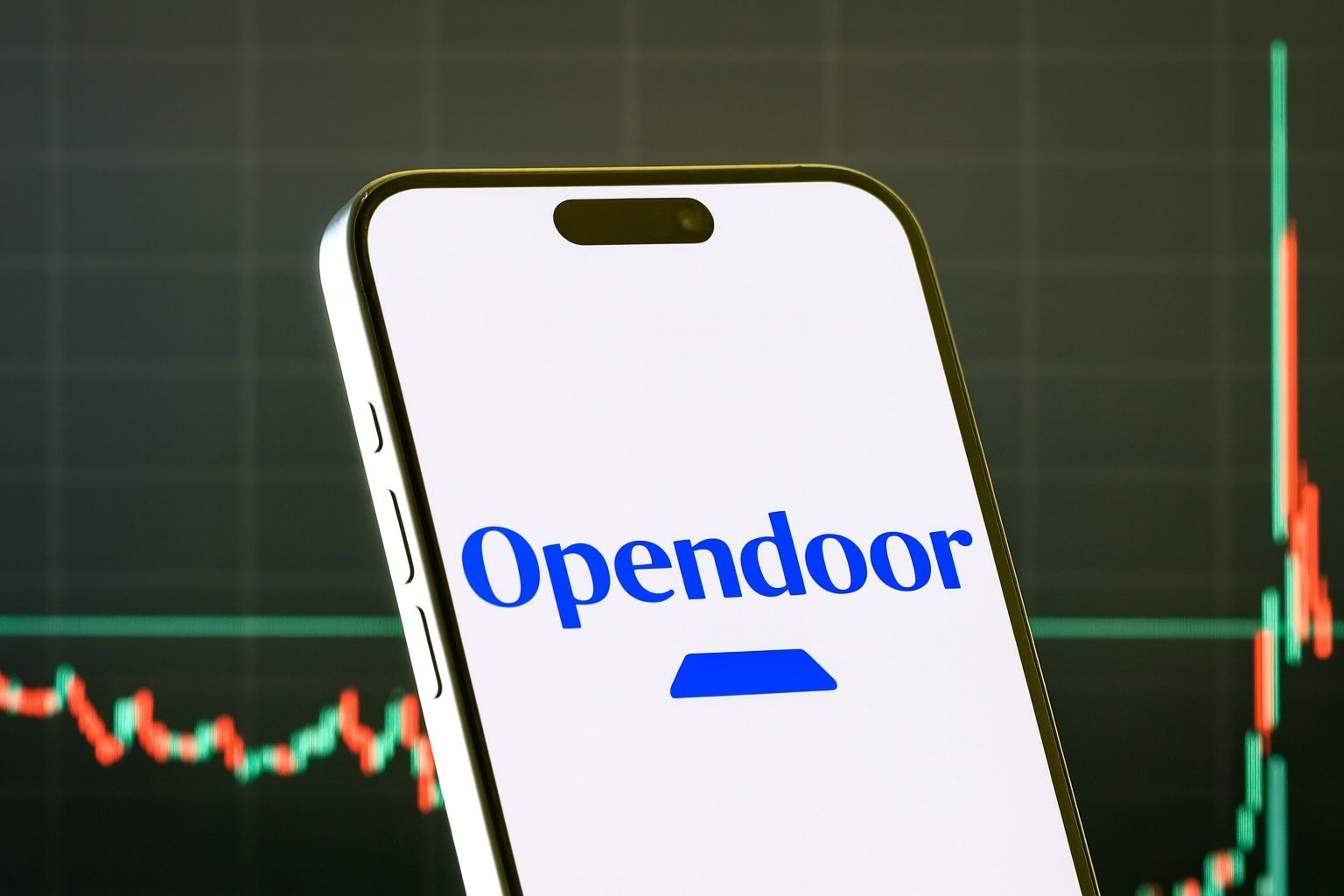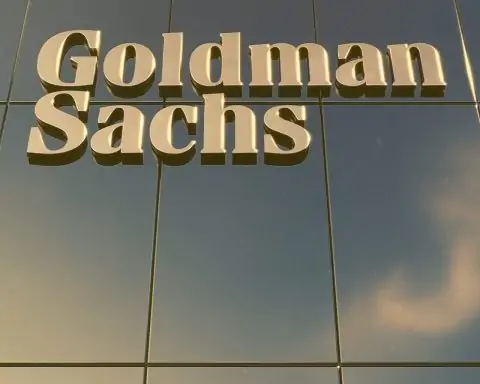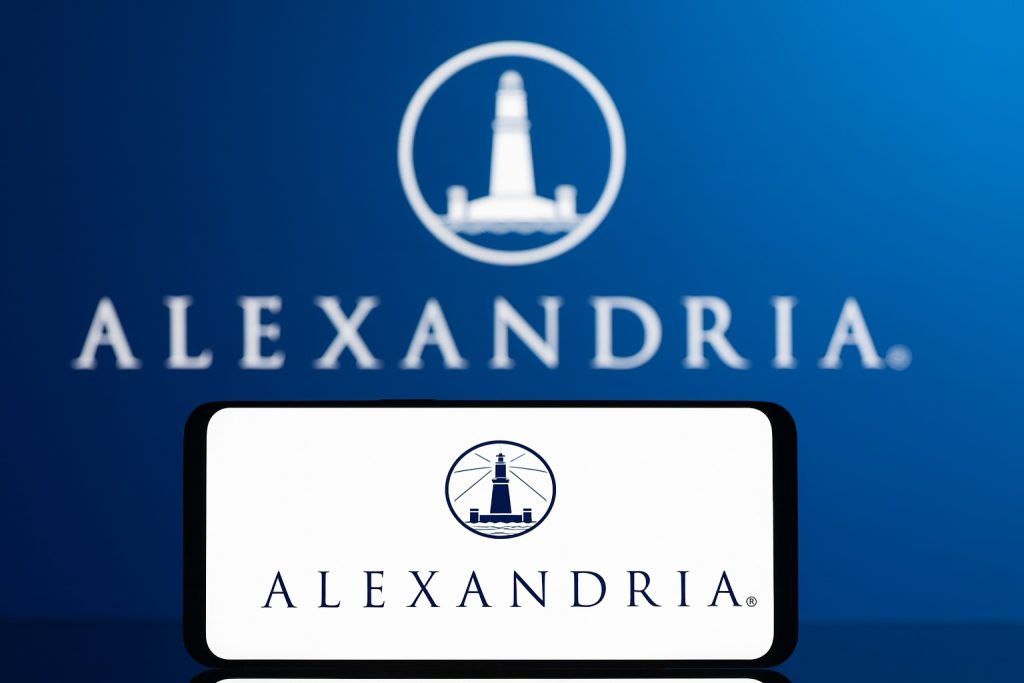- Skyrocketing 2025 gains: Opendoor Technologies (NASDAQ: OPEN) saw its stock explode from penny-stock levels under $1 in June to a high of $10.87 by mid-September – a +1,600% surge – before pulling back. Even after cooling off ~30% from that peak, OPEN remains up roughly 400% year-to-date (trading around $8 as of late October) [1].
- New CEO & crypto pivot: A major leadership shake-up in September installed former Shopify COO Kaz Nejatian as Opendoor’s new CEO (with co-founder Keith Rabois returning as Board Chair), sparking enthusiasm for an AI-driven turnaround [2]. The company also announced plans to accept cryptocurrency (like Bitcoin) for home purchases, igniting a one-day 14% stock pop on the news [3].
- Rate-cut hopes fuel rebound: Macroeconomic optimism lifted OPEN in recent days – on Oct. 24 the stock jumped over 13% in one session (to ~$7.97) after a cooler inflation report fueled hopes of imminent Federal Reserve rate cuts [4]. Real estate shares broadly rallied on prospects of lower borrowing costs, and Opendoor (highly sensitive to interest rates) hit its highest price in a week amid the Fed-driven surge [5].
- Wall Street wary: Most analysts remain skeptical of Opendoor. The average 12-month price target is only around $1–2 – implying over 80% downside from current levels [6] [7] – and the consensus rating is Hold/Sell. Bears cite the company’s thin margins and uncertain path to profitability. However, a few bulls (e.g. JPMorgan) have issued optimistic ratings, arguing OPEN’s roughly 1× sales valuation and tech advantages could yield upside if the housing market rebounds [8] [9].
- Technical signals: Chart-wise, OPEN has been stabilizing above the mid-$6s lately (shares bounced off ~$6.80 support on Oct. 22) [10]. But the September peak near $10 now looms as major resistance [11]. The stock’s 14-day RSI sits around 54 (neutral), and it’s trading slightly above its 20- and 50-day moving averages after the recent bounce – yet still 200%+ above its 200-day average, reflecting how far and fast it ran up this summer [12].
- Earnings on deck: Opendoor reports Q3 2025 earnings on November 6. The company has warned that Q3 revenue will plunge ~50% year-over-year (to ~$0.8–0.87 billion) and that it will slip back into a net loss [13]. With expectations already low, any surprises or upbeat commentary (e.g. on new AI initiatives) could spark sharp moves in the stock, while a disappointing report may rekindle volatility [14] [15].
Stock Price & Recent Performance
As of October 28, 2025, Opendoor’s stock trades around $8 per share after a tumultuous few months. The price action has been nothing short of a rollercoaster. In mid-2025, OPEN was languishing under $1 – effectively a penny stock – before an explosive rally took it to a 52-week high of $10.87 by mid-September [16] [17]. That run-up represents roughly a +1,600% climb in just a few months. Even after retracing from the peak, Opendoor is still up around 400% for the year, vastly outperforming the broader market [18]. By early autumn, Yahoo Finance noted OPEN as one of 2025’s top-performing stocks, up +369% year-to-date (versus ~14% for the S&P 500) [19]. The ride has been extremely volatile, however, with dizzying swings common. For instance, when the new CEO was announced in September, Opendoor’s share price spiked 75%+ in a single day, only to drop about 20% over the next two sessions as traders took profits [20]. Such whiplash moves underscore the speculative frenzy that has surrounded this stock.
This past week, OPEN has staged a brisk rebound. As recently as October 22, the stock had dipped to around $6.82 [21] amid a mid-month pullback. It then surged back to about $7.97 by the close of Friday, Oct. 24 – a jump of over 13% that day alone [22] – and ticked up further to ~$8.16 on Monday, Oct. 27. All told, shares rebounded nearly 20% off their mid-October lows in the span of a week. The late-week rally was fueled largely by macroeconomic news (more on that below), which helped Opendoor recoup some of the steep losses it suffered earlier in the month. Before the rebound, OPEN had fallen five days in a row in mid-October amid fading “meme stock” enthusiasm and declining trading volume [23]. The tide turned heading into the final week of October, highlighting just how reactive this stock remains to news flow.
Crucially, real corporate developments have also played into Opendoor’s wild 2025 ride. In September, the company underwent a high-profile leadership change: former Shopify executive Kaz Nejatian was brought in as CEO (after the resignation of prior CEO Carrie Wheeler on August 15), and co-founder Keith Rabois returned as Board Chairman [24]. This shake-up – combined with management’s renewed focus on making Opendoor an “AI-driven” real estate platform – sparked a wave of optimism that helped propel the stock’s spectacular run-up [25]. At the same time, Opendoor signaled a willingness to innovate its business model, even hinting at support for cryptocurrency in home transactions. CEO Nejatian caused a stir by suggesting that buyers may soon be able to purchase homes via Opendoor using Bitcoin and other crypto – a move that sent the stock up 14% in one day when investors caught wind [26] [27]. These bold initiatives and storylines (new tech-savvy leadership, potential crypto integration, etc.) have fed into the market’s speculative appetite. Yet after the initial euphoria, reality began to temper some of the excitement – leading to the volatility and profit-taking that saw OPEN pull back from its highs. The stock’s recent recovery into the high-$7s indicates that traders are still trying to find a equilibrium for this fast-moving name.
Latest News & Developments (Late October 2025)
In the past few days, Opendoor’s stock has whipsawed primarily on macro news. On Friday, Oct. 24, OPEN soared over 13% to about $7.97 after a cooler-than-expected U.S. inflation report fueled optimism that the Federal Reserve will cut interest rates sooner rather than later [28]. Real estate-related stocks rallied broadly on the prospect of lower mortgage rates, and Opendoor – whose business is highly sensitive to financing costs – was a standout beneficiary, jumping to its highest levels in a week [29]. This big one-day gain reversed a multi-day slide and underscored how strongly macroeconomic signals (like inflation data or Fed policy hints) can move Opendoor’s share price. Improving sentiment about the rate outlook late in the week clearly helped turn the tide for OPEN [30]. The stock’s responsiveness to such news reflects its underlying exposure: as an iBuyer (instant home buyer), Opendoor’s operations depend on housing demand and buyer affordability, which are directly impacted by interest rates.
Aside from the macro boost, Opendoor had some company-specific news to digest in recent days. Earlier in the week, reports emerged that Morgan Stanley raised its price target on OPEN from $2 to $6 (while maintaining an Equal-Weight/neutral rating) [31]. This was a notable shift from a major Wall Street bank – effectively acknowledging the stock’s upside momentum – even if Morgan Stanley stopped short of a bullish call. The target hike, coming ahead of the company’s earnings release, signaled slightly increased confidence that Opendoor’s prospects have improved off their lows [32]. Around the same time, Opendoor announced a key personnel addition: Giang LeGrice, a former Vice President of Operations at Shopify, was hired as Opendoor’s new Head of Operations [33]. CEO Kaz Nejatian (himself a Shopify alum) praised LeGrice as a “world-class leader,” and the hire is aimed at supporting Opendoor’s turnaround efforts [34]. Investors viewed this move positively – it aligns with Opendoor’s strategy of infusing tech industry expertise into its real estate processes. By bringing in talent experienced in high-scale tech operations, Opendoor hopes to streamline and modernize its home-buying platform. These developments, while relatively small in immediate financial impact, added to the positive sentiment around the stock, complementing the broader macro-driven lift.
Looking ahead just a bit, the next major catalyst on Opendoor’s calendar is its Q3 2025 earnings report, scheduled for November 6, 2025 [35]. This upcoming earnings release has investors on edge. Opendoor has already guided that its Q3 revenue will plunge about 50% year-over-year to roughly $0.8–0.87 billion, with the company sliding back into a loss after eking out a small profit in Q2 [36]. In fact, that weak Q3 outlook (issued back in August) initially hit the stock hard – shares dropped around 11% after Opendoor warned of the sharp revenue decline and renewed losses [37]. Now that the actual results are set to come out, the question is whether Opendoor can beat those low expectations or offer any encouraging updates that reassure investors. Wall Street analysts anticipate about a 36% YoY revenue drop for Q3 [38], so expectations are quite subdued. Any upside surprise – for example, if the revenue decline is milder than feared, or if the new CEO provides confident guidance for Q4 and beyond – could spark another rally in the stock. Nejatian has hinted the company is “close to shipping a relatively big change” in its product with an AI-driven software update [39], so investors will be listening for details on that during earnings. Conversely, if the Q3 numbers or forward guidance disappoint (say, wider losses or signs of ongoing demand weakness), OPEN’s recent gains could quickly evaporate. Given how volatile the stock has been, earnings will likely be a crucible moment that sets the tone for Opendoor’s share performance into year-end [40].
Analyst & Expert Commentary
Market analysts and experts are sharply divided in their views on Opendoor, with a notable split between cautious Wall Street sentiment and the enthusiasm of retail shareholders. On the Wall Street side, the prevailing attitude is one of skepticism. The average 12-month price target for OPEN is only in the $1 to $2 range [41], which is ~85–90% below the current trading price – implying that many analysts expect the stock to eventually give back the bulk of its 2025 gains. In fact, TipRanks data shows a “Moderate Sell” consensus rating, with an average target of about $1.02 (roughly 89% downside) based on few buys and several sell ratings [42]. Most brokerage analysts rate Opendoor either a Hold or an outright Sell at this point. Some have been very blunt: one hedge fund manager publicly slammed Opendoor as “total garbage,” arguing that its business model is fundamentally broken [43]. Bears point out that flipping homes at scale with razor-thin margins is an extremely tough way to consistently make money – and so far, Opendoor has yet to prove it can generate sustainable profits [44]. These skeptics highlight that the company has posted net losses in each of the past several quarters, and higher interest rates have only squeezed housing margins further. Indeed, multiple analysts have downgraded the stock during its run-up, contending that its valuation far outran the fundamentals. For example, in August Keefe, Bruyette & Woods cut OPEN to Underperform with a $1.00 price target, and Citigroup likewise slapped a Sell rating on the stock [45]. Such moves underscore the bearish view that Opendoor’s rally is built more on hype than on business reality.
On the other hand, a contingent of bullish analysts and investors see real potential in Opendoor – especially given the strategic changes underway. Notably, JPMorgan reportedly reiterated an Overweight (Buy) rating on OPEN in September when the new CEO was announced [46]. JPMorgan’s optimism stemmed from viewing the leadership change and renewed tech focus as positives that could reinvigorate the company. Likewise, as mentioned earlier, Morgan Stanley’s analysts reacted to the stock’s surge by upping their price target to $6 (though they remain neutral for now) [47]. Growth-focused bulls argue that after the drastic pullback in 2022–23, Opendoor now trades at roughly 1× its annual revenue – a seemingly modest price-to-sales valuation around 1.0 [48]. At ~1× sales, if Opendoor can return to a growth trajectory, the stock might be considered undervalued for a tech-enabled market leader. Proponents also note that Opendoor has achieved a ~43% revenue CAGR (compound annual growth) since its inception, indicating significant growth capability [49]. Crucially, Opendoor now holds a dominant position in the iBuyer space after competitors like Zillow and Redfin exited the home-flipping business. With virtually no equally scaled rivals left, Opendoor could potentially capture outsized market share once housing conditions improve [50]. As one optimistic observer put it, Opendoor’s technology and scale as the last major iBuyer “give it a second chance to thrive” if the housing market rebounds in its favor [51]. These bulls envision Opendoor evolving into a profitable, data-driven real estate marketplace – essentially disrupting home sales at scale – which could justify a far higher stock price in the long run [52].
Between these extremes, market sentiment remains highly polarized. Enthusiastic retail traders (sometimes dubbed the “$OPEN Army” on Reddit/StockTwits) continue to champion the stock and defy conventional valuation logic [53]. Meanwhile, many seasoned analysts urge caution, emphasizing that execution risk is high. Opendoor’s own management has set a goal to reach profitability by 2026, but acknowledges the need to “do more with less” and dramatically improve efficiency to get there [54]. Until the company can string together a few profitable (or at least break-even) quarters, Wall Street is likely to remain unconvinced. In summary, the divide is stark: skeptics see OPEN’s current price as wildly inflated by speculative fervor, whereas optimists see a beaten-down innovator that could make a comeback and prove the doubters wrong. This tension between the bear and bull narratives continues to play out in Opendoor’s volatile day-to-day stock movements.
Technical Analysis – Support, Resistance & Trends
From a technical perspective, Opendoor’s chart has mirrored the stock’s fundamental volatility. Over the past 52 weeks, OPEN has traded as low as $0.51 (an all-time low hit during the summer slump) and as high as $10.87 (the mid-September peak) [55]. Such an extraordinarily wide range highlights the rollercoaster nature of the stock. After spiking to double-digits and then retreating, OPEN has recently been attempting to carve out a base in the high-$6 to low-$7 area. In fact, shares found support around $6.80 on October 22, bouncing off that level before reversing higher [56]. This suggests that the upper-$6s could serve as an initial support zone – notably, it’s around the same price range where the stock consolidated briefly right after its September surge. Traders are watching to see if OPEN can continue to hold above ~$6.5–7; as long as it does, it indicates a possible floor where buyers step in. On the upside, the $10 mark (roughly the September high) now stands out as a major resistance level [57]. Any future rally would likely face profit-taking and technical selling pressure as OPEN approaches the double-digit price zone again. In essence, the stock is range-bound below its recent highs, with ~$6–7 as support and ~$10 as overhead resistance, until a new catalyst breaks it one way or the other.
Looking at technical indicators, the picture is mixed following the stock’s recent pullback and bounce. Opendoor’s 14-day Relative Strength Index (RSI) is currently about 54, which is in the mid-range – indicating the stock is neither overbought nor oversold at the moment [58]. This neutral RSI reflects the consolidation after September’s extreme run-up. Meanwhile, OPEN’s relationship to its moving averages shows some short-term improvement but lingering long-term stretch. Thanks to the late-October uptick, the stock has risen slightly above its short-term averages: it’s trading roughly 2% above its 20-day SMA and about 14% above the 50-day SMA as of the latest prices [59]. This suggests a possible trend stabilization or mild uptrend in the short term. However, Opendoor remains a staggering 200%+ above its 200-day moving average [60]. That gap is a legacy of the parabolic summer rally and underscores how stretched the stock’s longer-term trend still is. (For context, the 200-day average sits down in the low-$3 range – a reminder of where the stock traded for much of early 2025 [61].) Such a large divergence from the long-term mean often implies a risk of “mean reversion” – i.e. the stock could drift lower toward its average over time, unless fundamental strength supports the higher price. In short, momentum gauges show a stock that has cooled off from extreme overbought conditions and is trying to settle into a new equilibrium, albeit one that’s still quite elevated relative to the past year’s baseline.
Another notable factor is volatility. Opendoor’s stock experiences very wide daily swings – its average daily trading range is on the order of 10%, which is far above that of a typical mid-cap stock [62]. Double-digit percentage moves in a single day have become almost routine for OPEN. This elevated volatility means that even well-defined support or resistance levels can be pierced intraday. Traders caution that stop-loss orders need to be wider than usual and position sizes smaller to manage risk, given how quickly OPEN can move [63]. Notably, trading volumes had started to decline in early-to-mid October (signaling weakening momentum during the pullback), but volume spiked again during the late-October rebound [64]. That indicates renewed interest as the stock rose from its lows, possibly as momentum traders re-entered. All in all, the technical setup shows tentative stabilization. If the $6–7 support region continues to hold, bulls may gain confidence that a durable base is forming. In that scenario, the stock could trade sideways or gradually trend up, especially if it breaks above near-term pivots around $8.50–$9 (which might then open the door to retest $10) [65]. On the flip side, a break below the mid-$6 range would be a bearish signal that could trigger a deeper retracement of the 2025 gains. And even if the stock rallies, the $10–11 area will likely be a tough ceiling to crack without some fundamentally positive news to justify a further run-up [66]. Traders continue to monitor these key levels while bracing for more of the swift swings that have characterized OPEN’s chart this year.
Housing Market & Macroeconomic Context
The broader housing market and macroeconomic climate are critical to understanding Opendoor’s situation. Essentially, Opendoor’s fortunes rise and fall with real estate demand, home prices, and financing conditions. In 2022–2023, the company faced a very challenging environment: the Federal Reserve’s rapid interest rate hikes pushed 30-year mortgage rates from the ~3% range in early 2021 to over 7% by 2023 – the highest in two decades [67]. Housing affordability plummeted as a result, and U.S. home sales volumes fell to multi-decade lows [68]. Virtually overnight, the market flipped from a red-hot seller’s market (in 2021) to a cooled-off buyer’s market by 2023 [69]. This kind of macro shift was brutal for iBuyers like Opendoor. The company was stuck holding housing inventory in a declining market and had to sell many homes for less than it paid, leading to heavy losses. Indeed, a big part of Opendoor’s ~$1 billion in losses during 2022 was due to write-downs on home values as prices softened. Both Zillow and Redfin, after facing similar struggles, ultimately shut down their iBuyer programs by 2021–2022 for these reasons [70] [71]. Opendoor survived, but the experience underscored how vulnerable the model is to housing cycles.
As we enter late 2025, there are finally some glimmers of hope on the macro front. Inflation, which spurred the Fed’s rate hikes, has been gradually cooling this year. In response, the Federal Reserve has pivoted to an easing stance – in September 2025, the Fed cut interest rates for the first time in the current cycle [72]. Another quarter-point rate cut is widely anticipated by the end of October [73]. While mortgage rates are still high (recently in the mid-6% range for 30-year loans), they’ve ticked down slightly from their peaks above 7% [74]. Importantly, there are signs of life in housing activity: new home sales spiked +20% in August 2025 compared to earlier in the summer [75]. This surge suggests that buyers are slowly creeping back into the market, aided by homebuilders offering incentives and the stabilization of rates. Some analysts interpret it as a possible bottoming in the housing market, with 2025 potentially marking the low point for sales volumes [76]. If the trend of easing rates and improved buyer interest continues, 2026 could see a modest housing recovery take hold. Historically, when interest rates fall, there’s a few months’ lag before mortgage rates drop and buyer affordability improves [77] – so the Fed’s recent moves could translate into a more favorable housing climate as we head into next year. In summary, after two very tough years, the macro environment for real estate looks like it may be turning a corner, though the recovery is still tentative.
For Opendoor, a housing rebound can’t come soon enough. The company’s margins are razor-thin, so it really needs home prices to at least hold steady (if not rise) during the short period it holds inventory, and it needs transaction volumes to pick up so that it can flip more homes efficiently. Management has indicated that a sustained housing uptick will be key to improving profitability [78]. In the second quarter of 2025, Opendoor did see a brief bright spot – it managed a $23 million adjusted EBITDA profit (its first positive quarter since 2022) on $1.6 billion in revenue [79], thanks in part to aggressive cost-cutting and selling through older inventory. But the Q3 outlook (with revenue expected to be barely half that of Q2) shows how dependent the business is on housing conditions and seasonality [80]. Essentially, Opendoor’s financials remain highly volatile and levered to the real estate cycle [81]. If mortgage rates continue to fall and buyers return, Opendoor could benefit from higher demand and perhaps better pricing power on the homes it sells. Conversely, if the economy slips into recession or if borrowing costs spike again unexpectedly, it could once again leave Opendoor holding depreciating houses and facing another cash crunch [82].
The company (and its investors) are effectively betting that 2025 marked the bottom of the housing slump and that conditions will improve from here [83] [84]. The optimists point to early signals like stabilizing home prices, slightly lower mortgage rates, and the Fed’s friendlier stance as reasons to believe the worst is over [85] [86]. If demand strengthens and home values tick up even modestly, Opendoor could potentially start selling homes at a profit again and regain some operating leverage. On the other hand, pessimists caution that the housing market might stay sluggish for years, or that any number of macro risks (from a resurgence in inflation to global economic shocks) could derail the recovery [87]. They note that housing cycles often take a long time to fully turn around, and there’s no guarantee 2026 will bring a boom – it could be a slow grind instead. In that more bearish scenario, Opendoor would struggle to gain traction and might be forced to further scale back its home-buying, which in turn limits growth. As of now, Opendoor’s strategy is predicated on being ready for the next housing upswing. The company drastically reduced its inventory and expenditures during the downturn, and it’s now trying to ramp up efficiency (through tech, AI, and new programs) so that it can do more with less. Macro trends that Opendoor cannot control will have an outsized impact on its fate. The optimistic view is that the real estate cycle is finally turning in Opendoor’s favor – the company just needs to hang on long enough to benefit from it [88]. The pessimistic view is that any relief could be too little too late, or short-lived.
Outlook – What’s Next for OPEN Stock
Short-Term (Next 1–3 Months): In the immediate term, expect the volatility to continue. All eyes are on the Q3 earnings report due November 6, which could be a make-or-break event for the stock [89]. Because Opendoor has already guided to such low numbers (a ~50% revenue drop and a return to losses [90]), the bar is set very low – which means any upside surprise could jolt the stock higher. If Opendoor manages to beat these diminished expectations or if CEO Kaz Nejatian provides a compelling update on the company’s strategy (for example, unveiling that anticipated “big” product change leveraging AI) [91], investor sentiment might swing positively and spark another rally. On the flip side, if the earnings reveal even steeper losses, weak home sales, or a lack of clear progress on the turnaround, the market could react harshly. With such a large year-to-date run-up, some traders may be inclined to take profits on any good news, which could cap the upside without truly exceptional results [92] [93]. Apart from earnings, macroeconomic news will continue to drive daily moves. Any further cooling in inflation or confirmation of Fed rate cuts could give OPEN a sentiment boost (as we saw with the late-October surge), whereas any indication that inflation is not slowing or that the Fed might pause the rate-cut cycle could weigh on housing-sensitive stocks [94]. Given the cross-currents, many analysts suspect the stock might remain range-bound in the near term – perhaps oscillating roughly between the mid-$6s and upper-$8s – as bullish and bearish forces tussle for control [95]. It would not be surprising to see OPEN whipsaw on headlines in the coming weeks. The active retail trader presence adds an unpredictable element: sudden bursts of social-media hype or meme-like interest could trigger outsized moves on little news, just as occurred during the frenzy in September. In summary, the next few months for OPEN will likely be characterized by rapid swings, with the Q3 earnings and Fed developments acting as key catalysts that could tip the balance either way.
Medium-Term (1–2 Years): The bigger question is whether Opendoor can successfully execute its turnaround plan and prove that the iBuying business model can be profitable at scale. By 2026, management aims to reach at least break-even, if not actual profitability [96]. Achieving that will likely require a combination of improved market conditions, much higher operational efficiency, and disciplined growth execution. On the bullish side, there are reasons for cautious optimism. Opendoor’s new leadership appears to be taking aggressive steps to right-size the business – cutting costs, streamlining staffing, and focusing on an “AI-first” approach to improve pricing and workflows [97]. The company has pivoted to an “AI-driven, agent-assisted” platform (sometimes dubbed an “agent-led” model) that enlists local real estate agents to help sell Opendoor’s listings, rather than trying to disintermediate agents entirely [98]. This strategy, along with tech improvements, aims to boost the rate at which Opendoor can resell homes and reduce how long it holds properties (thereby lowering holding costs and risk). Early signs are encouraging: Opendoor has reported that its new “Opendoor Exclusives/Key Connections” program – which integrates partner agents and a 7-day “home test drive” for buyers – doubled the number of sellers accepting Opendoor’s offers and increased listing conversions fivefold in pilot markets [99]. If these kinds of enhancements can scale up, they could improve Opendoor’s margins and make the business more resilient. Additionally, the market opportunity remains enormous – millions of homes (worth trillions of dollars) are sold in the U.S. each year. Opendoor currently has only a tiny fraction of that market; even a 1-2% share of U.S. home sales would translate to tens of billions in revenue. In a bullish scenario where Opendoor perfects its model and captures a meaningful slice of the housing market, it’s conceivable the company becomes a dominant, profitable digital real estate platform. In that case, today’s ~$8 stock price could, in theory, prove to be a bargain – some proponents see multibagger potential in the long run if everything goes right [100].
However, the bearish longer-term scenario cannot be ignored. Skeptics ask: can Opendoor ever sustainably make money flipping homes, given the inherent market volatility and slim profit margins? Thus far, even in its best quarter, the company barely broke even on an adjusted EBITDA basis. Bears argue that even at the current ~$8 price (and ~$5–6 billion market cap), the stock isn’t “cheap” if Opendoor continues to burn cash or issue new shares to fund operations [101]. The valuation presumes future earnings that may not materialize – Opendoor is still valued in the billions despite cumulative losses and an uncertain path to consistent profitability [102]. If the much-hoped housing recovery stalls out or if Opendoor’s tech-and-AI efficiency push fails to significantly improve margins, the company could keep struggling to turn a real profit. In that case, today’s price might end up looking like an artifact of 2025’s speculative fervor – a level that slowly “re-rates” downward over time. Some analysts have warned against the “cheap stock” illusion: just because OPEN climbed from under $1 to $10 doesn’t guarantee it will stay elevated, especially if fundamentals don’t catch up. The fading of trading volume and momentum in October was a cautionary sign that the hype can and will cool off without new catalysts [103]. If retail interest wanes and Opendoor fails to deliver tangible financial improvements, the stock could potentially sink back toward penny-stock levels, relinquishing a large portion of its 2025 gains [104].
Bottom Line:Opendoor remains a high-risk, high-reward story at this stage. In the short run, its stock will likely continue to be driven by headlines – gyrating on news about interest rates, inflation, and the company’s own progress (or setbacks) in reshaping its business [105]. In the long run, the ultimate trajectory of OPEN will hinge on execution and housing trends. Optimists believe that with fresh leadership, an AI-powered platform, and a leaner operation, Opendoor could finally crack the code of online homebuying and justify a much higher valuation. Pessimists believe the company is on borrowed time – propped up by a meme-stock moment and a brief housing uptick – and suspect the stock will eventually revert to its former lows as reality sets in. As of late 2025, Opendoor’s saga is truly at a crossroads. The next few quarters, along with the direction of the U.S. real estate market, will likely determine which narrative wins out [106]. Investors should tread carefully and watch the key indicators – from housing data and mortgage rates to Opendoor’s own cash burn and profit margins – as the company navigates this pivotal chapter [107].
Sources: Key information in this report is drawn from TechStock² analysis and recent news coverage of Opendoor [108] [109] [110] [111], the company’s financial disclosures, as well as commentary from market experts and major financial outlets. [112] [113] All data is current as of October 28, 2025.
References
1. ts2.tech, 2. ts2.tech, 3. ts2.tech, 4. ts2.tech, 5. ts2.tech, 6. ts2.tech, 7. www.tipranks.com, 8. ts2.tech, 9. ts2.tech, 10. ts2.tech, 11. ts2.tech, 12. ts2.tech, 13. ts2.tech, 14. ts2.tech, 15. ts2.tech, 16. ts2.tech, 17. ts2.tech, 18. ts2.tech, 19. ts2.tech, 20. ts2.tech, 21. ts2.tech, 22. ts2.tech, 23. ts2.tech, 24. ts2.tech, 25. ts2.tech, 26. www.tipranks.com, 27. www.tipranks.com, 28. ts2.tech, 29. ts2.tech, 30. ts2.tech, 31. ts2.tech, 32. ts2.tech, 33. ts2.tech, 34. ts2.tech, 35. ts2.tech, 36. ts2.tech, 37. ts2.tech, 38. ts2.tech, 39. ts2.tech, 40. ts2.tech, 41. ts2.tech, 42. www.tipranks.com, 43. ts2.tech, 44. ts2.tech, 45. ts2.tech, 46. ts2.tech, 47. ts2.tech, 48. ts2.tech, 49. ts2.tech, 50. ts2.tech, 51. ts2.tech, 52. ts2.tech, 53. ts2.tech, 54. ts2.tech, 55. ts2.tech, 56. ts2.tech, 57. ts2.tech, 58. ts2.tech, 59. ts2.tech, 60. ts2.tech, 61. ts2.tech, 62. ts2.tech, 63. ts2.tech, 64. ts2.tech, 65. ts2.tech, 66. ts2.tech, 67. ts2.tech, 68. ts2.tech, 69. ts2.tech, 70. ts2.tech, 71. ts2.tech, 72. ts2.tech, 73. ts2.tech, 74. ts2.tech, 75. ts2.tech, 76. ts2.tech, 77. ts2.tech, 78. ts2.tech, 79. ts2.tech, 80. ts2.tech, 81. ts2.tech, 82. ts2.tech, 83. ts2.tech, 84. ts2.tech, 85. ts2.tech, 86. ts2.tech, 87. ts2.tech, 88. ts2.tech, 89. ts2.tech, 90. ts2.tech, 91. ts2.tech, 92. ts2.tech, 93. ts2.tech, 94. ts2.tech, 95. ts2.tech, 96. ts2.tech, 97. ts2.tech, 98. ts2.tech, 99. www.tipranks.com, 100. ts2.tech, 101. ts2.tech, 102. ts2.tech, 103. ts2.tech, 104. ts2.tech, 105. ts2.tech, 106. ts2.tech, 107. ts2.tech, 108. ts2.tech, 109. ts2.tech, 110. www.tipranks.com, 111. www.tipranks.com, 112. ts2.tech, 113. ts2.tech







